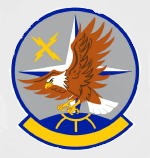Hobby Master HA3003 USAF General Dynamics EF-111 Raven Electronic Warfare Aircraft - "Let 'em Eat Crow," 42nd Electronic Combat Squadron, RAF Upper Heyford, England, 1989 [Low-Vis Scheme] (1:72 Scale)
"Tell the Vietnamese they've got to draw in their horns or we're going to bomb them back into the Stone Age. And we would shove them back into the Stone Age with Air power or Naval power—not with ground forces."
- General Curtis LeMay, May 1964
 The General Dynamics F-111 "Aardvark" is a medium-range interdictor and tactical strike aircraft that also fills the roles of strategic bomber, reconnaissance, and electronic warfare in its various versions. Developed in the 1960s and first entering service in 1967, the United States Air Force (USAF) variants were officially retired by 1998. The Royal Australian Air Force (RAAF) is the sole remaining operator of the F-111.
The General Dynamics F-111 "Aardvark" is a medium-range interdictor and tactical strike aircraft that also fills the roles of strategic bomber, reconnaissance, and electronic warfare in its various versions. Developed in the 1960s and first entering service in 1967, the United States Air Force (USAF) variants were officially retired by 1998. The Royal Australian Air Force (RAAF) is the sole remaining operator of the F-111.
The F-111 pioneered several technologies for production military aircraft including variable-sweep wings, afterburning turbofan engines, and automated terrain following radar for low-level, high-speed flight. Its design was influential, being reflected in later Soviet aircraft such as the Sukhoi Su-24, and some of its advanced features have since become commonplace. During its inception, however, the F-111 suffered a variety of development problems, and several of its intended roles, such as naval interception through the F-111B, failed to materialize.
In USAF service the F-111 has been effectively replaced by the F-15E Strike Eagle for medium-range precision strike missions, while the supersonic bomber role has been assumed by the B-1B Lancer. In 2007, the RAAF decided to replace its 21 F-111s in 2010 with 24 F/A-18F Super Hornets.
Pictured here is a 1:72 scale rendition of a USAF General Dynamics EF-111 Raven Electronic Warfare Aircraft dubbed "Let 'em Eat Crow," that was attached to the 42nd Electronic Combat Squadron, then deployed to RAF Upper Heyford, England, during 1989.
Sold Out!
Dimensions:
Wingspan: 12-1/4-inches
Length: 10-1/2-inches
Release Date: November 2010
 Historical Account: "Spark-Vark" - The General Dynamics/Grumman EF-111A Raven was an electronic warfare aircraft designed to replace the obsolete B-66 Destroyer in the United States Air Force. Its crews and maintainers often called it the "Spark-Vark", a play on the F-111's "Aardvark" then nickname.
Historical Account: "Spark-Vark" - The General Dynamics/Grumman EF-111A Raven was an electronic warfare aircraft designed to replace the obsolete B-66 Destroyer in the United States Air Force. Its crews and maintainers often called it the "Spark-Vark", a play on the F-111's "Aardvark" then nickname.
In 1972, the USAF contracted Grumman to convert some existing General Dynamics F-111As into electronic warfare/electronic countermeasures (ECM) aircraft. The USAF had considered the Navy Grumman EA-6B Prowler, but was reluctant to adopt a Navy aircraft. After the EF-111 retired in the 1990s, the Air Force began depending on Navy and Marine Corps EA-6B squadrons for electronic warfare.
A contract to create EF-111s from existing F-111A airframes was awarded to Grumman in 1974. The first fully equipped model, known then as the "Electric Fox", flew on 10 March 1977, and deliveries to combat units began in 1981. A total of 42 airframes were converted at a total cost of US$1.5 billion, the last delivered in 1985. Each F-111A cost $15 million, with each conversion costing US$25 million.
The Raven retained the F-111A's navigation systems, with a revised AN/APQ-160 radar primarily for ground mapping. The primary feature of the Raven, however, was the Raytheon AN/ALQ-99E jamming system, developed from the Navy's ALQ-99 on the Prowler. Its primary electronics were installed in the weapons bay, with transmitters fitted in a 16 feet (4.9 m) long ventral "canoe" radome; the complete installation weighed some 6,000 pounds (2,700 kg). Receivers were installed in a fin-tip pod, or "football", similar to that of the EA-6B. The aircraft's electrical and cooling systems had to be extensively upgraded to support this equipment. The cockpit was also rearranged, with all flight and navigation displays relocated to the pilot's side, and flight controls except throttles being removed from the other seat, where the electronic warfare officer's instrumentation and controls were installed.
The EF-111 is unarmed. The aircraft's speed and acceleration were its main means of self-defense. The EF-111 was not capable of firing anti-radiation missiles in the lethal SEAD role, which was a tactical limitation. A few sources indicated that the inner wing pylons could be fitted to allow carriage of AIM-9 Sidewinders for self-defense.[citation needed] The EF-111A's engines were upgraded to the more powerful TF30-P-9 of the -D model, with 12,000 pounds-force (53 kN) dry and 19,600 lbf (87 kN) afterburning thrust in 1986.
From 1987 to 1994 the Spark 'Vark underwent an Avionics Modernization Program (AMP), similar to the Pacer Strike program for the F model. This added a dual AN/ASN-41 ring laser gyroscope INS, AN/APN-218 Doppler radar, and an updated AN/APQ-146 terrain-following radar. Cockpit displays were upgraded with multi-function displays borrowed from the F-16 Fighting Falcon.


